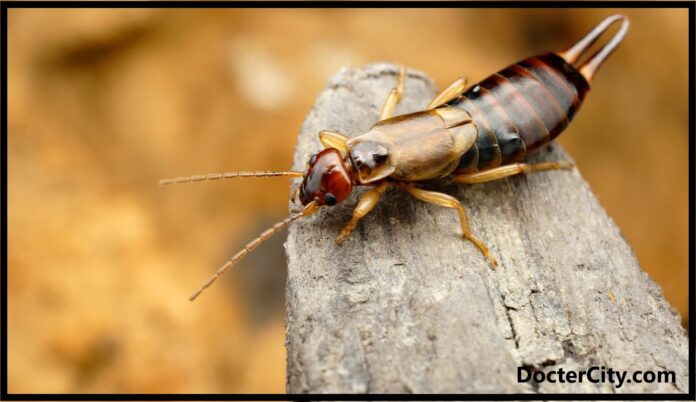Introduction
Earwig Bite – Earwigs, those intriguing insects armed with pincers, often find themselves at the center of various myths and misconceptions, especially when it comes to their bites. In this comprehensive article, we aim to shed light on the truth behind earwig bites, separating fact from fiction. As we explore the intricacies of earwig behavior, anatomy, and the myths surrounding their bites, we’ll equip you with the knowledge needed to navigate the often-misunderstood world of these fascinating insects.
Understanding Earwigs
Anatomy of Earwigs
Before delving into the discussion about earwig bites, it’s crucial to familiarize ourselves with the anatomy of these creatures. Earwigs belong to the order Dermaptera and are recognized by their distinctive pincers, known as cerci, located at the end of their abdomen. Even though they have a scary look, earwigs don’t usually hurt people.
Earwig Behavior
Contrary to popular belief, earwigs do not have a particular affinity for human ears. This misconception likely stems from their name, which has no basis in reality. Earwigs are primarily nocturnal, feeding on decaying plant material, fungi, and small insects. They prefer dark, moist environments, often making gardens and mulched areas their ideal habitats.
Dispelling Earwig Bite Myths
Myth 1: Earwigs Lay Eggs in Human Ears
One of the most persistent myths surrounding earwigs is the belief that they crawl into human ears to lay eggs. Nevertheless, this assertion is unsupported by any scientific data.
Earwigs do not target human ears for nesting, and such incidents are extremely rare. The origin of this myth likely lies in the misunderstanding of the insect’s name and the misinterpretation of their behavior.
Myth 2: Venomous Earwig Bites
While earwigs do possess pincers, they are not venomous. These pincers serve various purposes, including defense and mating rituals within their own species. Earwigs rarely use their pincers for biting humans, and when they do, the bites are generally harmless, causing only mild and temporary discomfort.
The Reality of Earwig Bites
Occurrence and Severity
Earwig bites on humans are infrequent, and the majority of encounters result in little to no harm. These insects are not inherently aggressive towards humans, and bites typically occur when an earwig feels threatened or cornered. Even in such cases, the bites are usually mild, causing minimal discomfort and posing no significant health risks.
Symptoms of an Earwig Bite
In the rare event that you experience an earwig bite, the symptoms are generally minor. Redness, slight swelling, and temporary discomfort at the bite site are the most common effects. It’s important to note that severe reactions or allergies to earwig bites are exceptionally uncommon.
Treatment for Earwig Bites
For most individuals, an earwig bite does not necessitate medical attention. Simple measures such as cleaning the affected area with mild soap and water, applying an antiseptic ointment, and using a cold compress can help alleviate any discomfort. However, if you encounter severe pain, swelling, or signs of an allergic reaction, seeking medical advice is advisable.
Preventive Measures for Earwig Bites
Habitat Modification
To minimize the likelihood of encountering earwigs and potential bites, consider modifying their habitat around your home. Clearing away decaying plant material, reducing mulch in immediate surroundings, and creating a drier environment can discourage earwigs from establishing colonies.
Seal Entry Points
Sealing entry points into your home, such as cracks and crevices in walls and windows, is an effective way to prevent earwigs from finding their way indoors. This measure not only helps avoid bites but also contributes to overall pest control.
Natural Repellents
Utilize natural repellents, such as diatomaceous earth, around the perimeter of your home. These substances create barriers that deter earwigs and other insects from entering your living spaces.
Conclusion
In conclusion, understanding the reality of earwig bites is crucial for dispelling the myths that surround these intriguing insects. Earwigs are not aggressive towards humans, and their bites, although rare, are generally harmless. By adopting preventive measures and debunking misconceptions, we can coexist peacefully with these fascinating creatures without succumbing to unnecessary fear.
The next time you come across an earwig, remember the insights shared in this article. Armed with knowledge, you can appreciate the role of earwigs in the ecosystem and navigate the world of earwig bites with confidence.

